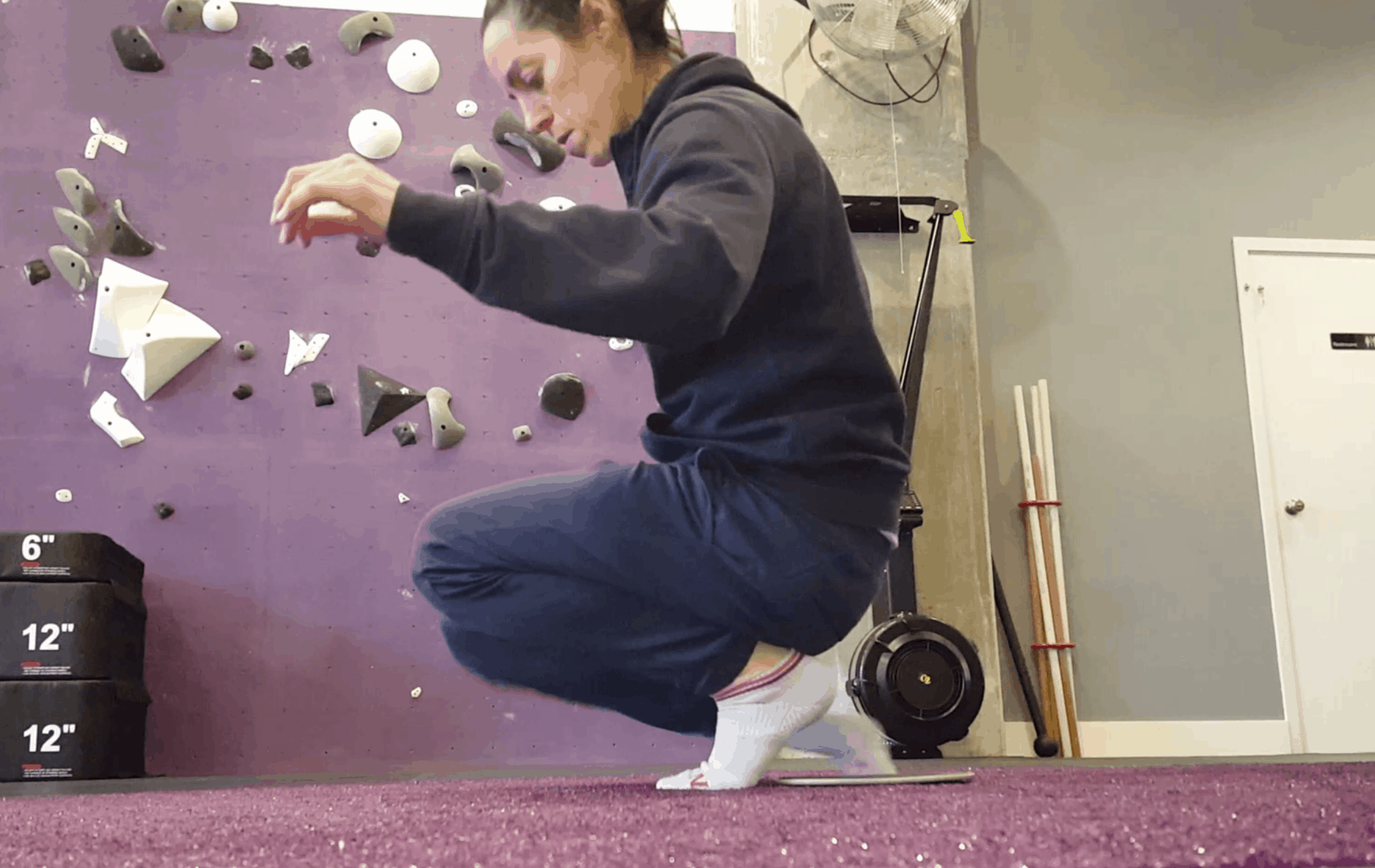
Knees, Hamstrings, and Low Gait
The low gait might be the truest test of healthy knees. It requires full flexion under full bodyweight while pulling the center of mass. A single knee is responsible for stabilizing load while the feet and ankles pivot and reposition. The demanding task can quickly turn precarious for those who have sustained any type of lower body injury. Often unpleasant, it urges a delicate investigation of all variables involved. Movements that evoke pain or discomfort can be a masterful teacher.
As with any experiment, that data you examine depends on what you decide to pay attention to. Furthermore, having a functional norm (like a ‘good’ leg or knee or hip) provides a baseline of comparison. With my right foot down, I can easily get into and out of the low gait position. I can pause, float one leg off the ground, and feel steady. These abilities are absent when I switch to the left. Any smooth deftness is replaced with unease and annoyance.
When things work well, the sequencing of movement is tough to delineate. There aren’t any bio markers to help map its course. Plainly said, trouble-free movement is uninteresting to me. Without something to figure out, my body cannot act as my brain’s play thing.
Personally, a check engine light is not a source of worry or frustration. It is the recognition of an issue, a question of ‘what’s wrong here?’ that seeks answering. Musings give purpose to explorations. They encourage one slow down and pull over, pop the hood, and look for leaks or looseness that might inform of a specific problem so it can be specifically addressed.
Noticing is the first means to fixing.
You can’t investigate what you’re not aware of. While pain shrieks to make itself known, the quieter signs are no less informative. The way a body passively rests, for example, reveals behaviors each limb and part are partial to. The following clips, videoed from my perspective of recognition, detail limitations, weaknesses, and tendencies I was otherwise oblivious to:
- Limited left knee flexion with hip flexion and internal rotation.
- Left hip restricted in external rotation but with ample internal rotation (right hip IR deficient)
- Connecting torso flexion to rotation, fixating at the point of preferred switch from IR to ER
Once known, I sought to find ways to train them accordingly. Hamstring flexion has been a point of vulnerability since my ACL surgery, but the examination in this particular context had been missing. Sliding boxes are one of my favorite tools, and I used them to alter my environment and orientation to study feels:
Since dorsiflexion slides felt the most difficult, keeping it as a constant helped me understand it’s influence while I manipulated other things. Low gait, like walking, does not utilize a rigid foot, so practicing curls both dorsi- and plantar flexed gave me subjective feedback from both positions.
Similarly, low box slides led me to some long position struggles in the form of shakes and quakes:
The pre and post 90/90 angles improved quite a bit after the extended leg external rotation hold.
Findings from long hamstring work was combined with hip/torso flexion to gain ease of knee flexion, so I could comfortably get my foot underneath me. I then tested the knee under load and under various angles through support leg hovers:
Getting to the ground removed the elevation assistance of the boxes. Sliding became more laborious and the resistance demanded more from the hamstring.
A larger perspective of what is happening during low gait is one leg contracts while the other relaxes. The shortened, supportive side tenses and the reaching side releases. It is a bilateral contrast. To exemplify this, a slider was used to minimize any drag on the lead foot and free it up to fully lengthen. The hamstring can both push or pull the hip, and when the hamstring curl follows a hip retraction, the foot glides smoothly and can efficiently handle the weight transfer:
The essence of sliding is to manipulate load under safe and supportive angles. Balancing on the toes of the back leg distinguishes the low gait from the pistol squat, and is likely what makes it such a knee killer.
Difficult movements require patience to learn. Painful ones add on a hefty dose of humility. In accepting both, you acknowledge that being considerate of all the details takes time. First you have to find them, then you have to figure out their meaning. To ponder, speculate, and scrutinize is to empower. Recognizing that you are responsible for both the destruction and healing makes the relationship you have with your body an intimate one, softening the way you communicate with it. When done with affection, the connections become brilliantly clear.



